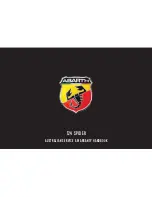
Page 3 of 5
is not under pressure other than the residual tank return line pressure drop, but welding must be
checked for leaks.
2. Use either vehicles low pressure standard pump to lift from fuel tank via water separator/fuel filter
to header tank into one of the bottom connections.
3. Draw off from other bottom connection to high pressure pump and then to engine fuel rail.
4. The fuel rail carries fuel to the injectors and is pressurised by the fuel regulator to 45-50 PSI. As the
high pressure pumps) should always be supplying in excess of maximum engine demand, the fuel
not required by the engine is forced across the regulator and then directed to one of the top
header tank connections to supplement the L.P. pump. The excess is then returned via the other
top connection to the fuel tank. In particular single rayon braid nose (SAE 10085) hydraulic hose 250
PSI W.P. with high grade correct dia worm/drive clips must be used. Screw fittings and hoses are
obviously 0.K. but do not use normal low pressure fuel hose under any circumstances as it is not
designed for use at 50 P.S.I.
BEFORE FIRST START UP
CHECK FUEL SYSTEM FOR LEAKS
Disconnect brown 12V. pump supply and connect pumps (both low pressure and high pressure in
turn) to battery supply. Run for 5 mins and check all threaded and push on connections for any
leaks. Rectify and check again. Your thoroughness in this area could well determine your
investment's life as well as your own.
E.C.U. CHECK
Plug in loom to E.C.U. Turn on ignition, both relays should close, one supplying power to the E.C.U.
the other power to the fuel pump(s). After 3 seconds the pump relay should drop out. The red
L.E.D’s next to the fuel calibration adjustments should light up in order, giving a display of the value
relative to the appropriate adjustment. This should step through each adjustment every 15 seconds
until the cycle is complete, when it will repeat for as long as is required, only to be stopped by
turning the ignition off or starting the engine.
SUGGESTED INITIAL START UP SETTINGS
1. Set switches 1 and 2 for cylinder number.
2. Set switches 3, 4 and 5 to ON, OFF, ON.
3. Set switch 6 to appropriate setting.
4. Turn on ignition switch. But do not start engine.
5. As and only when the red L.E.D. is illuminated adjust the calibration adjustment with a small
screwdriver until the number 50 appears in the display panel. Set all the adjustments at this level.
Depending on the injector size, these settings will allow the engine to both start and run, although it
may be too rich. If much too rich, stop and reset switches 3, 4, and 5 back to OFF, OFF, ON which
will effectively reduce fuel flow by approximately 20% and repeat engine run until rough setting has
been achieved.
Setting fuel calibration for full load
Start the engine, and after any run in period, during which time the light load setting and the range
may have to be adjusted, increase engine speed to 3000 R.P.M. (4000 RPM for a highly tuned
engine) and gradually increase dynamometer load while watching the CO reading. Remember
most CO meters have lag or delay period of up to and, in some cases, over 10 seconds. If the
engine is very highly tuned you may not want to hold it for a long period but 5 seconds is long
enough. Then back off and watch the CO meter and it will respond as the slug of gas produced
while under load passes through the meter and is processed. Adjustment of the 4000 R.P.M.
calibration can then be carried out and the same speed and load be again applied and the
results checked. Most engines give maximum power with CO readings in the 5% region. Anything
under 3.0% is dangerous as it is too lean for constant high power operation. Although if tuning a























